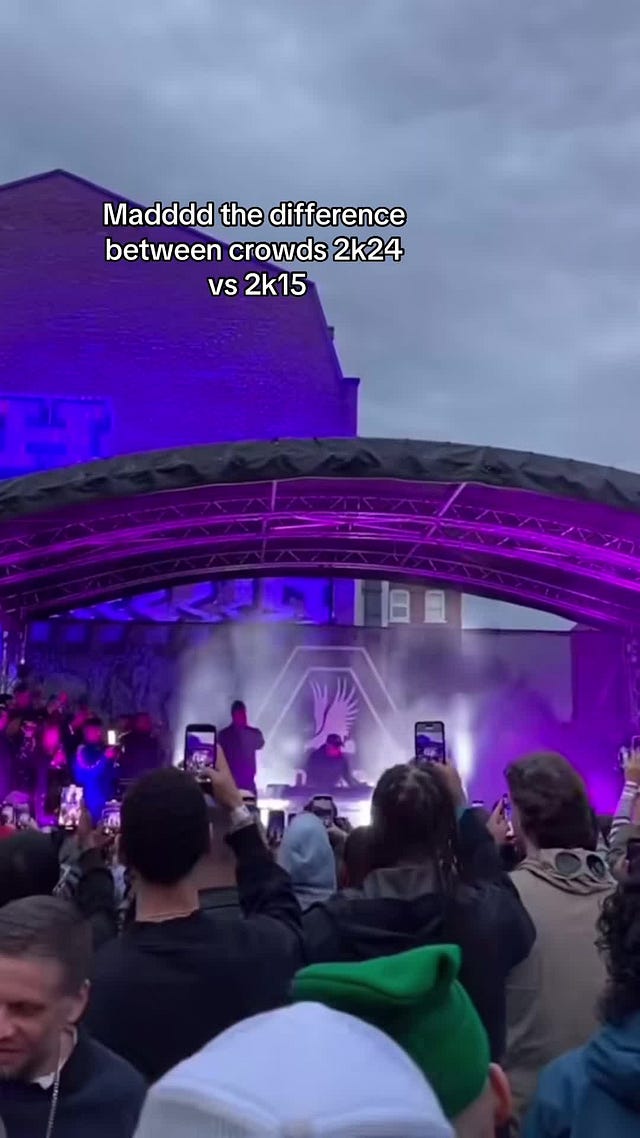MØRNING. For this week’s Screen Share, our Strategist Yus gives us a peek into his timeline (and mind). Dive in…
HOW PLACES BECOME SPOTS
When Kendrick Lamar mentioned the Toronto restaurant New Ho King in his record "Euphoria" the spot went viral, achieving a marketing feat it never would’ve been able to achieve on its own. This isn’t New Ho King’s first brush with pop culture. The spot was partly mentioned because Drake was robbed there in 2009. But this time around, the business owner was ready for the moment, embracing the digital world we now live in, he created a new special at the restaurant called the "Kendrick Lamar Special," based on Kendrick’s order in the song. Drake even shot a music video at New Ho King for his "Family Matters" response track.
It’s a prime example of how pop culture can make a place famous. Take the legendary Cabaret Voltaire, the nightclub in Switzerland that became the birthplace of Dadaism, or Studio 54, the infamous New York nightclub that was popular thanks to its A-list regulars. Or more recently East London’s BeauBeaus, which has quickly risen in popularity because it was founded by Slawn, a cult figure in the London scene.
But places don’t necessarily need famous names to make them relevant. A place can also become a spot thanks to its role in people’s lives. Take Scarr’s Pizza in New York, which became popular for its distinct pizzas and atmosphere, before landing a collab with Nike, London’s Reference Point, a creative library that also programs events throughout the week, or the thousands of other spots that are hot right now in whichever neighbourhood you live in. After all, all a place needs to become a spot is some culture.
THE SHIFT TOWARDS THE TASTE ECONOMY
It often feels like there’s too much noise on the internet; everyone’s a creator seeking their 15 minutes of fame, as prophesised by Warhol. This is not entirely a bad thing. Democratisation has allowed for knowledge to be more accessible. There’s also been a rise in user-friendly creator tools, making it easier for aspiring creators to explore their creative side. A clothing brand is a screen print away, a remix or edit is a Serato stem away, and a graphic design is a Figma or Canva away. However, while this is beneficial for the creator, it’s become almost unbearable for the viewer. Everything comes with trade-offs, and in this creator economy landscape, we’ve certainly traded quality for quantity. For the viewer, the only way to cut through the noise is to pursue quality through the use of discernment, which is where taste comes in.
During one of my evening scrolls, I came across this tweet about the ‘taste economy’, as coined by Daisy Alioto. For those unfamiliar, the ‘taste economy’ is a direct response to the abundance of content we’re flooded with. It’s a call to both the creator and the viewer, asking the creator to place emphasis on the quality of output as opposed to quantity, while asking the viewer to use taste as a medium for discernment and evaluation.
What does this mean for brands and creators? Taste can even be used to fight against the algorithm or manipulate it to your favour. Quite simply, viewers are yearning for more. If you want people to engage with what you’re putting out, then quality and taste need to be embedded in your approach.
THE LAWS OF CULTURE
The laws of culture are akin to the laws of energy: culture cannot be created or destroyed, only transferred. What I mean by this is you can’t manufacture culture or the zeitgeist; it happens organically as things shift and move from one wave to another. Case in point: Puma X Skepta’s infamous illegal rave of 2015. I remember that day clearly. As someone who didn’t live in London, I just wished I could’ve been there. For those who were in London, they can tell you exactly where they were when they found out about it. That’s a real cultural moment—you can’t manufacture that.
 Tiktok failed to load.
Tiktok failed to load.Enable 3rd party cookies or use another browser
Fast forward to 2024, Skepta announced on his instagram that he would once again be throwing an event in Shoreditch ahead of the release of his Puma collab. However there was a stark difference between the crowds at the two events: in 2015, people went there for the love of Skepta; in 2024, people went for the clout of Skepta. My X timeline was filled with tweets pointing out that you can’t compare the beautiful chaos of a DIY event with an influencer-heavy industry event on a well-lit stage, but that’s exactly the problem. Despite the money behind the 2024 event, you can see one thing clearly missing: soul.
That’s not to say this soul doesn’t still exist: the UK saw huge energy from crowds at festivals over the recent May bank holiday weekend. It’s just that it’s harder for brands to replicate. If you want to win people’s hearts and minds, you need to show up in people’s worlds authentically. Have a tangible touchpoint in people’s lives. Take New Balance, who continue to support independent platforms like Gauchoworld and emerging artists like Korby, or ON who are increasingly growing their cultural footprint by tapping into brands like PAF, partnering with FKA Twigs and collaborating with local spots like Paris-based Sri Lankan food spot, Kolam. These brands dare to take risks, earning market share by aligning themselves with those that currently define the zeitgeist, thereby showing up naturally in people’s worlds.
ARE WE MISSING THE ELEMENT OF SURPRISE?
In the past decade, sports reporting has changed significantly. In football, we've seen the rise of independent journalists, ITK (in the know) pages providing you ‘insider’ information, aggregator social media pages giving you the daily round up and forums dedicated to the latest news.
There’s also been what we call the Fabrizio Romano effect. Fabrizio emerged circa 2015-16 as a Twitter journalist with the ability to be ahead of the curve and deliver transfer news in a language that’s digestible to young fans, destabilising the monopoly traditional media like Sky Sports had on delivering transfer updates. His credibility grew to the point where a transfer wasn’t considered official until it got the famous Fabrizio "HERE WE GO!" seal of approval.
Fast track to 2024, and Fabrizio is sitting on his throne, but fans are starting to get fatigued by his signature style. Fabrizio was also first to announce the completion of Kylian Mbappe’s transfer to Real Madrid (the biggest transfer completed in recent years), and a football fan on X was quick to point out that this style of delivery has sucked out the emotion that comes from the news break on official channels. I saw a tweet (with scores of likes and retweets) from football Twitter, highlighting how surprising it was that a club was able to be the first to deliver the news of their manager leaving before voices like Fabrizio could leak it. The feeling clearly resonated with football fans, indicating that people are missing the element of surprise, in retaliation to the information overload that we’re riddled with on our timelines daily.
This isn't just in sports; we see it in drop culture too. People don’t want leaks of upcoming drops; they want to be surprised by the announcement. The Corteiz x Supreme collab is a good example of this, where the announcement via the billboard in West London was a bigger moment than the drop itself. People miss the element of surprise when they first hear news from official channels and not aggregators. Again, they want quality information, not huge quantities of ‘news’. Maybe it’s time brands and content creators alike re-embraced the element of surprise…
That’s that for today, readers. Catch us over on Instagram, or we’ll see you for more hot takes and deep dives next week. ‘Til next time.











